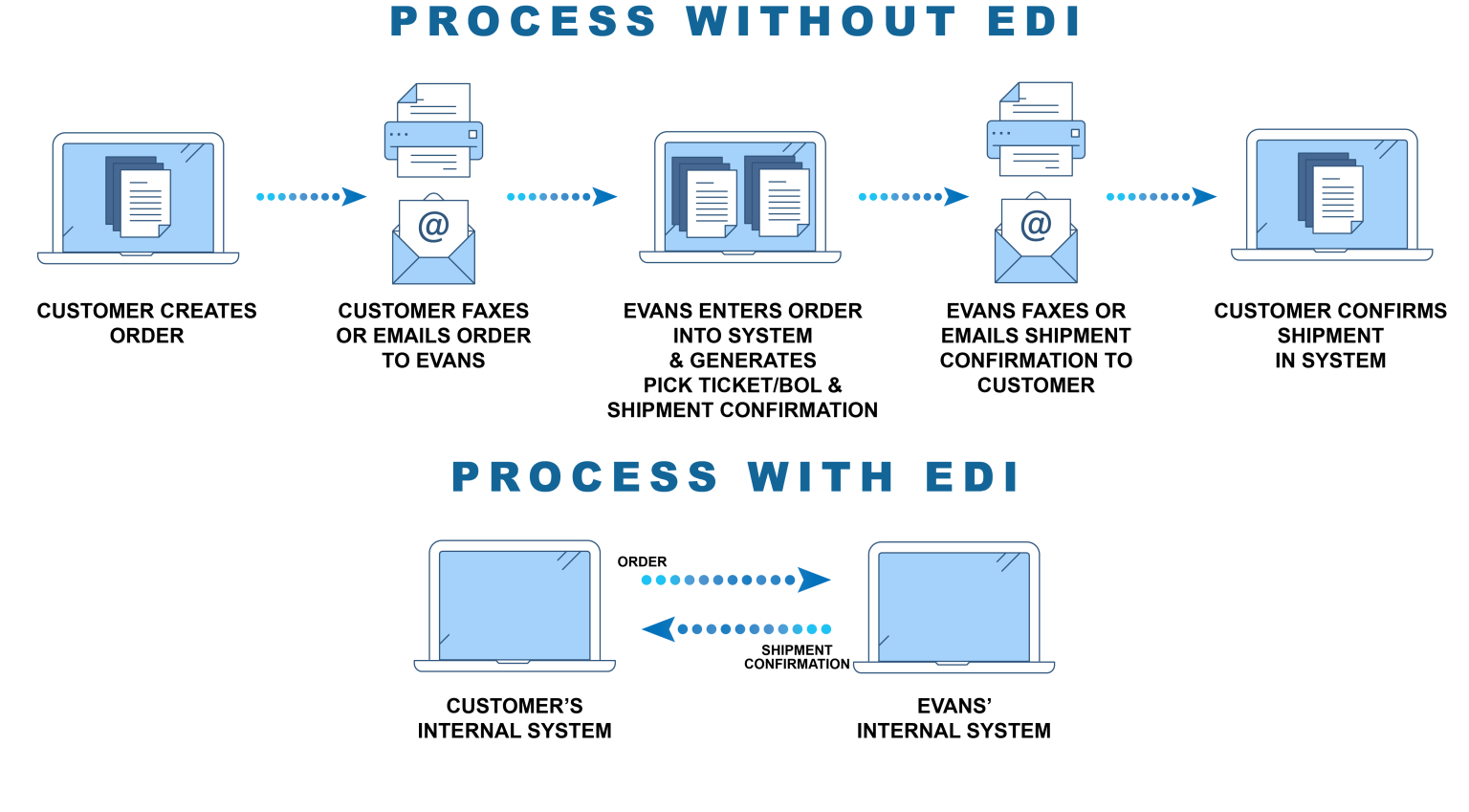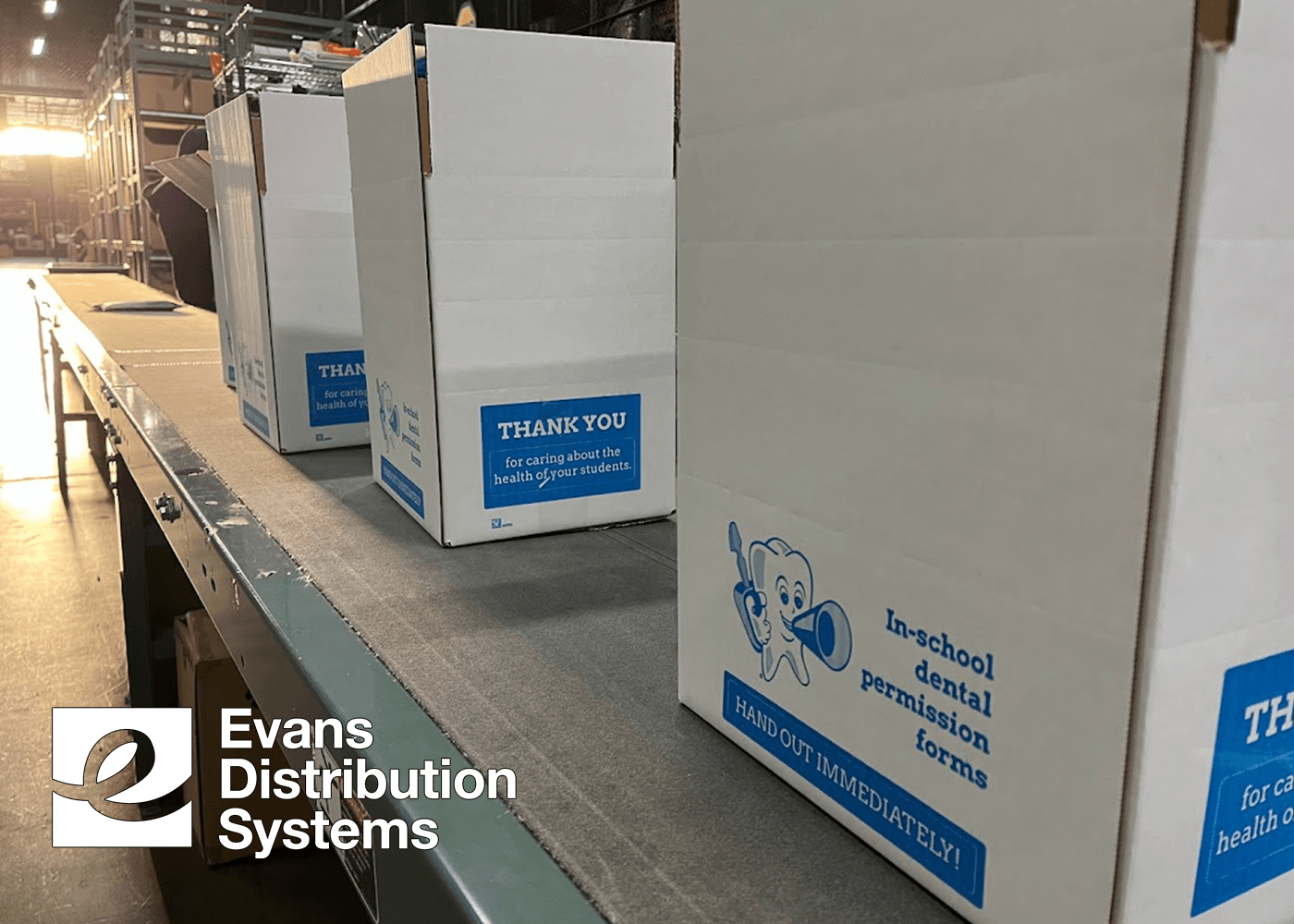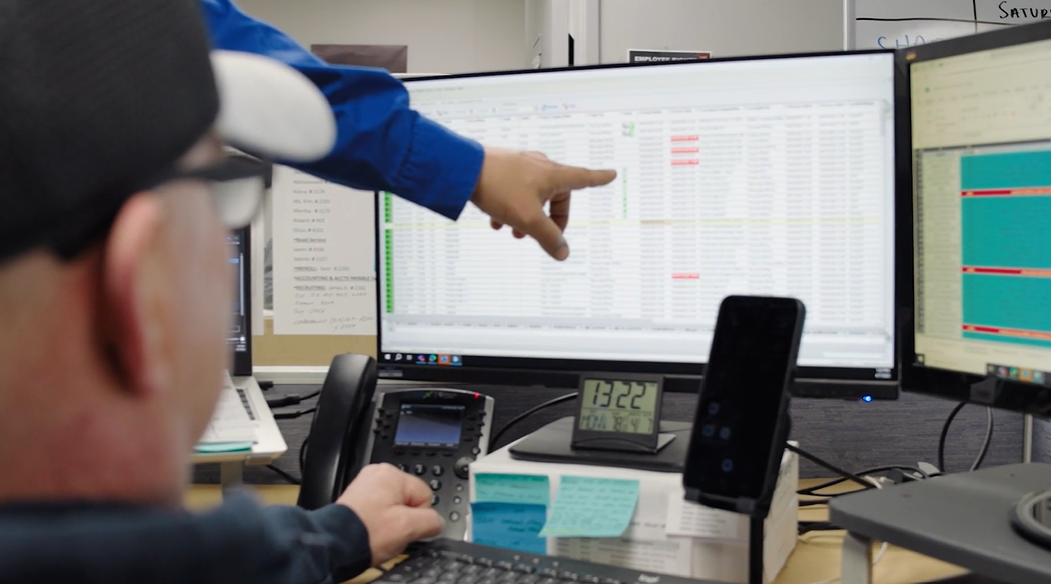Electronic Data Interchange (EDI)
EDI is a widely adopted and standardized approach to facilitate the exchange of business documents with trading partners in a fast, precise, and dependable manner.
EDI Capability &
Experience
Evans Distribution Systems employs EDI development experts who can address your particular requirements and create tailored solutions.
Electronic Data Interchange (EDI) is a computer-to-computer exchange of business documents between trading partners in a standardized electronic format. It enables companies to exchange business documents, such as purchase orders, shipment notices, invoices, and other types of documents, electronically without the need for paper-based documents or human intervention.
What is EDI?
How does EDI work?
EDI streamlines business processes by replacing the manual entry of data received through traditional methods, such as email, fax, and mail, with electronic exchanges of business documents between two companies. To begin, a company creates an electronic document using information from their internal business systems, spreadsheets, or related transactions. This document uses standardized EDI formats, known as transaction codes, which are easily ingested and utilized by many businesses.
When the document is ready to be sent to a trading partner, it is transmitted through a secure EDI network, which could be a direct connection between the two companies or through a third-party provider. The EDI network ensures that the document is securely transmitted and received by the intended recipient.
The recipient’s EDI software then translates or “maps” the data in the document into a format that their internal systems can understand and process.
Once the data is translated, it can be automatically imported into the recipient’s business systems, eliminating the need for manual data entry. The recipient can then create a response document, such as an invoice or shipping notice, using the same EDI process to send back to the originating company.

- Lower operating costs
- Increased speeds
- Improved accuracy
- Increased efficiency
- Enhanced transaction security
- Increased visibility
- Environmentally friendly
Benefits of EDI
EDI Capability
Achieving EDI capability and compliance involves a process of automation, integration, and standardization. To establish EDI capability, companies must establish a communication infrastructure for sending and receiving EDI messages with their trading partners. Companies must configure new EDI connections for each partner in their network in order for EDI capability to function effectively across the supply chain.
Connections can be indirect over a Value Added Network (VAN) or direct through in-house, on-premise, or third-party cloud EDI solutions.
At Evans, we have the EDI capability and experience to support your company’s requirements. We offer flexible solutions and can support a variety of standard, non-standard, and custom EDI communication protocols.
EDI is Easier with Evans
Evans' EDI Capabilities
Communication
Protocols
Evans can receive and transmit data using any of the following communication protocols:
Communication
Standards
Evans has knowledge and experience using the following communication standards:
Custom
Integration

Experience
Learn how Evans provided Smile America Partners, a leading dental service organization that specializes in mobile dentistry, a custom online portal for creating and receiving orders.
Common EDI Transactions
- 830 – Planning Schedule with Release Capability
- 846 – Inventory Inquiry/Advice
- 850 – Purchase Order
- 856 – Ship Notice/Manifest (ASN)
- 862 – Shipping Schedule
- 940 – Warehouse Order
- 943 – Warehouse Stock Transfer Shipment
- 944 – Warehouse Stock Transfer Receipt
- 945 – Warehouse Shipping Confirmation
- 947 – Warehouse Inventory Adjustment
- 997 – Functional Acknowledgement
- 204 – Load Tender
- 210 – Freight Invoice
- 213 – Motor Carrier Shipment Status Inquiry
- 214 – Order/Load Status Update
- 990 – Load Tender Accept/Reject
- 997 – Functional Acknowledgement
3PL Insights Blog

Evans Goes Live with New Trimble TMS Systems Across Entire Transportation Operation
Evans is proud to announce its full adoption of the Trimble Transportation Management Software (TMS) on both our asset-based and non-asset-based (brokerage) freight operations. In

Robot Logistics: Storage & Handling Mastery
As robotics continues to reshape manufacturing, distribution, and fulfillment, more companies are investing in large, complex automation systems to gain a competitive edge. But when

The Future is AI: Series Three, Enhancing the Customer Experience
In today’s fast-paced logistics landscape, customer expectations are higher than ever, and it is logistics companies’ responsibility to meet these changing demands. Real-time tracking, fast
